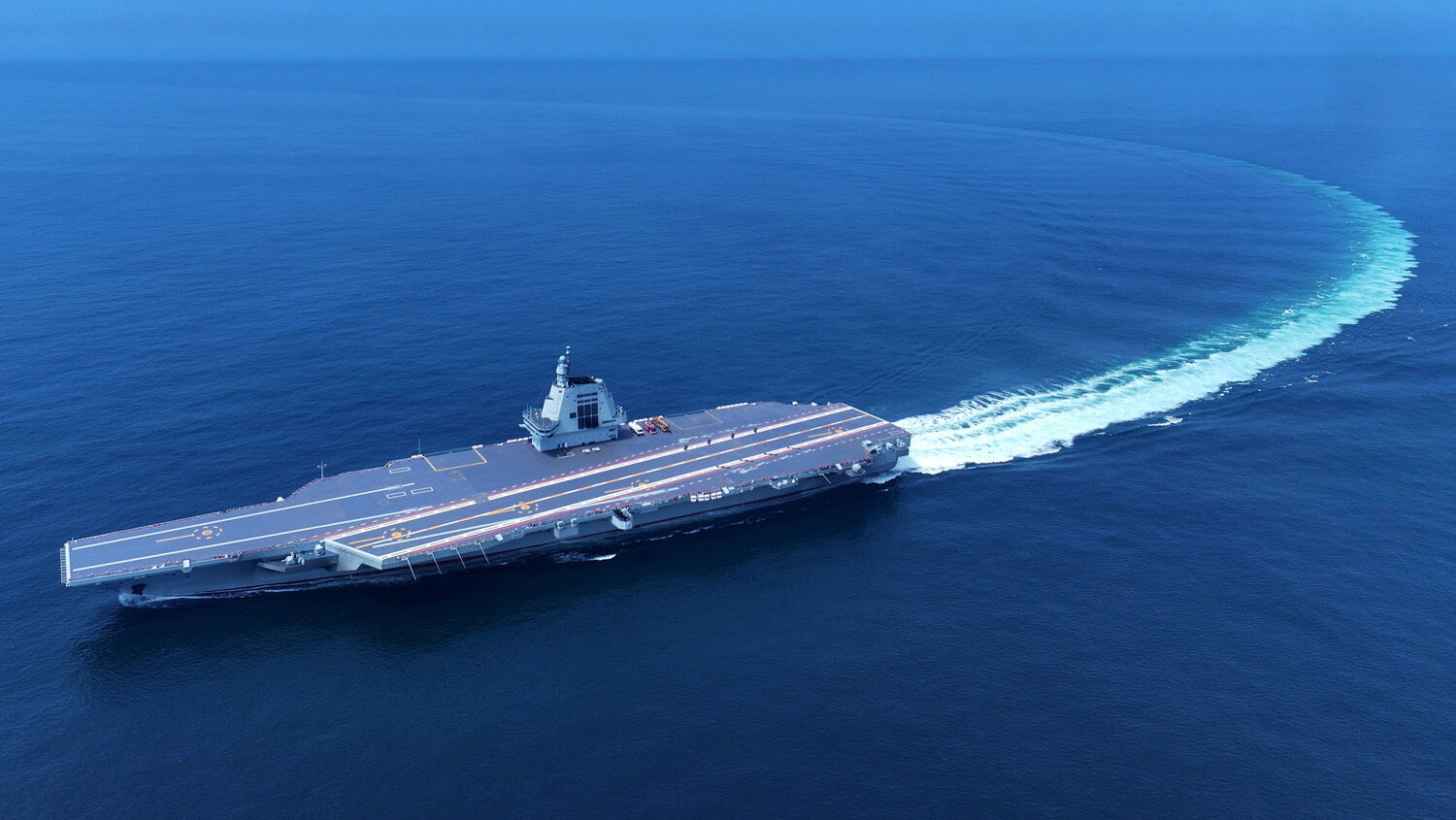
Third Aircraft Carrier Shows Chinese Navy Is ‘More Powerful by the Day’
China’s third and most advanced aircraft carrier, the Fujian, completed its maiden sea trials on Wednesday. This vessel marks a major milestone in the advancement of China’s naval capabilities and a landmark event in General Secretary Xi Jinping’s quest to extend his military reach far beyond China’s coasts.
https://twitter.com/Fighterman_FFRC/status/1788184706892382359
The Type 003 Fujian was built in China’s Jiangnan Shipyard beginning in 2018. With an estimated displacement of 80,000 tons, it is significantly larger than China’s first two aircraft carriers, Liaoning and Shandong, and it sets a record as the world’s largest non-American warship. While China’s first two carriers use the primitive “ski jump” method for launching aircraft, the Fujian has Catapult-Assisted Take-Off Barrier Arrested Recovery (catobar) capabilities and electromagnetic catapult system. This means it can launch heavier warplanes in a way that increases aircraft longevity. “This system marks a striking advancement over China’s first two aircraft carriers,” wrote Taiwan-based reporter Aadil Brar.
The Fujian is expected to operate an air group of more than 50 aircraft. These will likely include 12 J-35 and 24 J-15 fighter jets, as well as 8 Changhe Z-18 transport helicopters.
The Center for Strategic and International Studies said Fujian’s launch represents a “seminal moment in China’s ongoing modernization efforts and a symbol of the country’s growing military might.”
James Holmes of the Naval War College said the successful sea trials show that the Chinese Navy is “growing more powerful by the day.” The Fujian will open “new strategic vistas for the Chinese Communist Party regime in Beijing” because it means its navy “now has enough aircraft-carrier hulls—or verges on having, assuming Fujian proves out—to keep one or even two carrier groups at sea at all times should the high command ordain.”
For the United States and its Asian allies, the Fujian’s success serves as proof both of China’s expanding military might and its increasing determination to enforce—and likely expand—its maritime territorial claims. “With each new aircraft carrier, China is sending a signal that it has no peer among its neighbors,” said Patrick M. Cronin, head of the Washington-based Asia-Pacific Security Program at the Center for a New American Security.
Also significant is that while China’s first aircraft carrier took 13 years to build and develop, and its second took close to eight years, the Fujian needed only six years in overall development. And the Chinese Navy already has a fourth aircraft carrier, of the same class, under construction at its Dalian shipyard.
Besides aircraft carriers, Beijing has also prioritized the development of other watercraft designed to support and protect carriers in the event of conflict. A 2023 Pentagon report said China’s navy now has 370 vessels, making it the world’s largest maritime force by hull count. By 2030, China is expected to have 435 vessels.
These expansions of Chinese naval power are happening at remarkable speeds. And they will significantly advance Beijing’s goal of asserting control over the South China Sea. This region is where the rise of China’s navy takes on importance in terms of Bible prophecy.
Trumpet editor in chief Gerald Flurry has emphasized China’s increasing control over the South China Sea and how it relates to Bible prophecy. In a July 2016 Trumpet article, he wrote:
[T]he American military is retreating, and other great powers are coming in to fill the vacuum. … China is intimidating the nations of Southeast Asia into submission to its will. … Everything is headed in the direction of war.
Mr. Flurry explained that his understanding of China’s rise is based on Bible prophecy. In Deuteronomy 28:52, God warns the people of Israel that if they refuse to turn to Him, He will transfer control over the world’s strategic sea gates to its enemies. Mr. Flurry explained that this is “a prophecy for the modern-day descendants of Israel,” which mainly means the U.S. and Britain.
In recent years, China has taken control of the South China Sea and many of the maritime gates that access it. And this is happening in locations that just a few years ago were under the control of the U.S. and Britain. This is one area where we can see the Deuteronomy 28:52 prophecy being fulfilled. The Fujian’s successful sea trials and other advancements of Chinese naval power could hasten the fulfillment of these prophecies even more.
To better understand the prophetic significance of China’s rise, order a free copy of our booklet Russia and China in Prophecy.




